Figures & data
Figure 1. Illustration of step-marching scheme and second-order operator splitting operator used in the nonlinear acoustic wave propagation plane-by-plane in incremental steps from the transducer. Each step involves the effect of diffraction (D), attenuation (A), and nonlinearity (N).
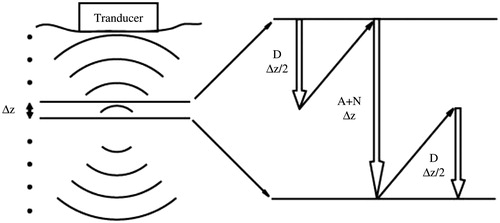
Figure 2. Schematic diagram of (a) a 331-element concave phased-array HIFU transducer and (b) the 3 layered media model used in the simulation.

Figure 3. Comparison of the first 5 harmonics on the axis of the HIFU transducer using the KZK equation (solid line) and the angular spectrum approach with second-order operator splitting scheme (dashed line) in a two layered media model.
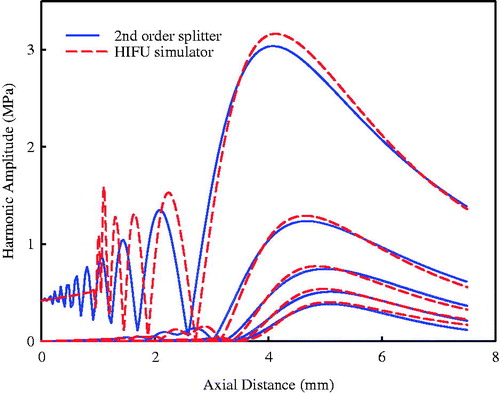
Table 1. Acoustic parameters of different media used in the simulation.
Figure 4. Comparison of the pressure waveforms at the focus of an annular HIFU transducer measured by a needle hydrophone and numerical simulations using the 2nd order operator splitting algorithm and the KZK model.
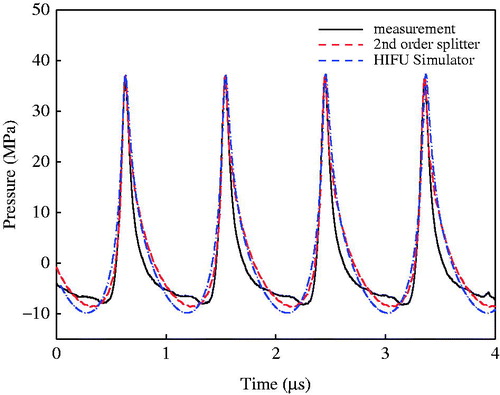
Figure 5. Comparison of the first 3 harmonics distribution (a) along and (b) transverse to the transducer axis obtained from the measurement and simulations using the 2nd order operator splitting algorithm and the KZK model.
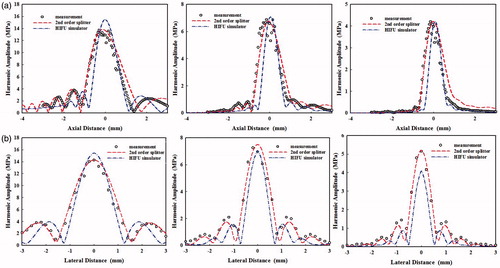
Figure 6. The simulated harmonics generated by the phased-array transducer in water with an input acoustic intensity of 8.33 W/cm2 along the axial axis (left column) and the lateral axis (middle column), and the pressure waveform at the focus (right column) with different focusing strategies: (a) geometrically focusing at (0, 0, 10) cm, (b) transverse focus shifting at (1, 0, 10) cm, and (c) generation of four foci at (−1, −1, 10) cm, (−1, 1, 10) cm, (1, −1, 10) cm, (1, 1, 10) cm.
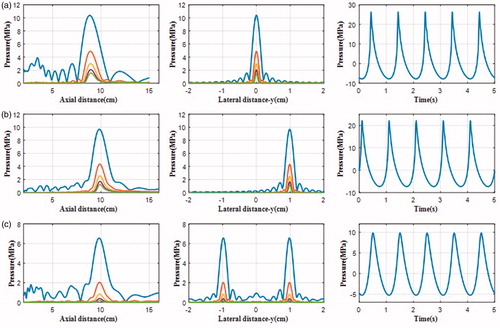
Figure 7. The simulated harmonics generated by the phased-array transducer in three layer media model with an input acoustic intensity of 8.33 W/cm2 along the axial axis (left column) and the lateral axis (middle column), and the pressure waveform at the focus (right column) with different focusing strategies: (a) geometrically focusing at (0, 0, 10) cm, (b) transverse focus shifting at (1, 0, 10) cm, and (c) generation of four foci at (−1, −1, 10) cm, (−1, 1, 10) cm, (1, −1, 10) cm, (1, 1, 10) cm.
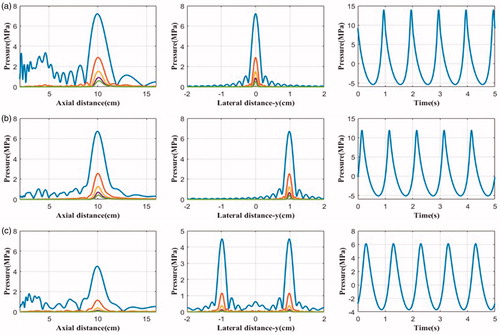
Table 2. Comparison of acoustic pressure at the focal points in water and tissue generated by different focusing patterns.
Figure 8. The simulation distribution of fundamental harmonic (left column), 2nd harmonic (middle column) and 3rd harmonic (right column) in the x-z plane generated by the phased-array transducer in three layer media model with an input acoustic intensity of 8.33 W/cm2 with different focusing strategies: (a) geometrically focusing at (0, 0, 10) cm, (b) transverse focus shifting at (1, 0, 10) cm, and (c) generation of four foci at (−1, −1, 10) cm, (−1, 1, 10) cm, (1, −1, 10) cm, (1, 1, 10) cm.

Figure 9. The simulation distribution of (a) peak positive pressure and (b) peak negative pressure in the x-z plane generated by the phased-array transducer in three layer media model with an input acoustic intensity of 8.33 W/cm2 with different focusing strategies: geometrically focusing at (0, 0, 10) cm (left column), transverse focus shifting at (1, 0, 10) cm (middle column), and generation of four foci at (−1, −1, 10) cm, (−1, 1, 10) cm, (1, −1, 10) cm, (1, 1, 10) cm (right column).

Figure 10. Comparison of the thermal field in the x-y plane (left column) and x-z plane (middle column) and presence of grating lobes in the x-z plane (right column) after 2-second continuous HIFU ablation through three layered media with an input acoustic intensity of 8.33 W/cm2 using different focusing strategies (a) geometrically focusing at (0, 0, 10) cm, (b) transverse focus shifting at (1, 0, 10) cm, and (c) generation of four foci at (−1, −1, 10) cm, (−1, 1, 10) cm, (1, −1, 10) cm, (1, 1, 10) cm.

Figure 11. Comparison of the temperature elevation at the focal point during 2-second continuous HIFU ablation using different focusing strategies simulated by linear (solid line) and nonlinear acoustic model (dash line).
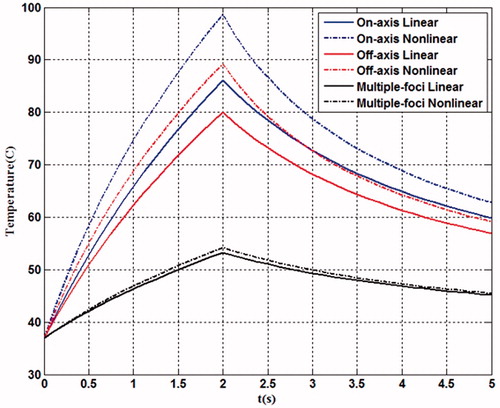
Figure 12. Comparison of the lesion size in (a) x-y plane and (b) x-z plane using different focusing strategies predicted by the linear (solid line) and nonlinear (dashed line) acoustic model after 2-second continuous HIFU ablation through three layered media with an input acoustic intensity of 8.33 W/cm2.
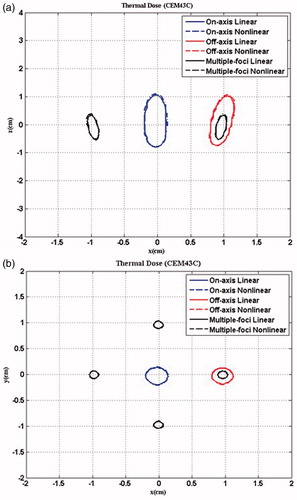
Table 3. Comparison of the maximum temperatures at the focal points after 2 s HIFU ablation and the lesion size in the tissue generated by different focusing patterns using linear and non-linear models.
Table 4. Comparison of the maximum temperatures at the focal points and in the pre-focal grating lobes after 2 s HIFU ablation and the lesion size in the tissue generated by different focusing patterns when adjusting the acoustic pressure at focus to the same value.
